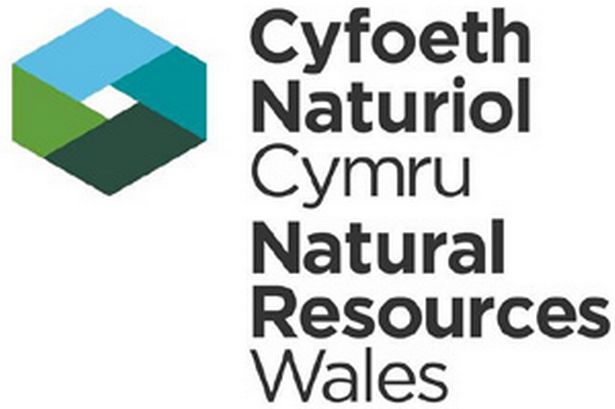
The 2024 National Whale and Dolphin Watch event involving thousands of volunteers from all around the UK is at its midway point. It started on the 26th July and ends on 4th August. So far, it has already revealed striking biodiversity of Britain’s whales, dolphins and porpoises. Organised by the Sea Watch Foundation, Britain’s oldest marine mammal research and education charity, preliminary analyses have provided compelling results.
The aim of the survey is to obtain a snapshot picture of the status and distribution of several of the species of cetaceans (whales, dolphins and porpoises) recorded in UK waters. Systematic watches from both land and sea are being conducted at locations all around our coasts and inshore waters, spanning from the north of Scotland to the south of the Channel Islands.
Already over just a five-day period, over 200 sightings of eleven different species have been recorded, with more reports coming in daily and five more days remaining. A regional summary is given below.
So far, this summer has been amazing for sightings of a wide variety of species. in the North-East of England. However, the most exciting sightings so far are the thresher shark spotted off the coast of Pembrokeshire, Wales, and the fin whales off the coast of Cornwall, SW England and Fife, East Scotland.
Minke whales are currently the most frequently sighted whale species, with reports coming in from all around the UK including Cornwall and Yorkshire, with a particularly large number of sightings off the North-East of England.

Large groups of common dolphins have been seen on their yearly aggregations. Just before the start of National Whale and Dolphin Watch, over 350 individuals were spotted off the coast of Falmouth, Cornwall. Pods as large as 50 have also been spotted along the south-west coast of England.
Bottlenose dolphins have been recorded along most of the UK coastline, with concentrations in Cardigan Bay, West Wales. Currently, the largest recorded group of bottlenose dolphins was seen in South Devon, with a pod reportedly consisting of around 100 individuals. This would be an exceptional number for Devon waters and we are currently seeking verification. Occasionally large groups do come into the Channel from offshore but previous reports have only been from west Cornwall.
So far, Risso’s dolphins have been recorded from Devon, West Wales and North Wales, and Northumberland in NE England. It is expected that further Risso’s dolphin sightings will be reported in the coming days.
The one species that observers can sight all around the UK is the harbour porpoise. At just 1.5 metres long, this is our smallest cetacean and has been seen around most of the British Isles. Currently, over 100 of these small, often overlooked, individuals have been recorded.
Cetacean data collection is strongly weather dependent. Factors such as sea state, swell height and visibility to the horizon affect how easily animals can be detected during a watch. Heavy rain and wind can even cause watches to be cancelled altogether. For these reasons, every year, we rely heavily on good weather conditions for the success of National Whale and Dolphin Watch. This year’s event was scheduled over ten days to increase the chances of coinciding with a favourable weather window. The weather forecast has provided a heatwave, which although brings good visibility conditions, has also increased the risks of heat. Around the country, several watches have been rescheduled, as well as adding more, to align appropriately with local weather conditions. With this heatwave, it will be interesting to see if there is a relationship between weather and sightings as it has done in previous years.
Regional Summaries
Scotland:
At the time of writing, sightings from Scotland have recorded seven species, including three large whale species and two dolphin species. The first whale sighting was of a humpback whale, first seen off the coast of Aberdeen and then a second sighting off the coast of Anstruther, Fife, possibly the same individual. A humpback whale was also seen at Gairloch on the west coast of Scotland. A fin whale was spotted at Anstruther on the same day as the humpback there, and there was possibly a second. This sighting is rare and exciting as fin whales are typically found in deeper waters of the open ocean close to the shelf edge. They are the second largest mammal in the world. The third species of baleen whale reported was two minke whale sightings submitted four hours apart in the south-east of Scotland.
Common dolphins are Scotland’s most regular recorded dolphin species, with pods of up to 25 being seen. Bottlenose dolphins are the second most common sighting, all sightings being in the vicinity of the South Grampian region. Reports of harbour porpoise are coming in from across the region, including aggregations of up to six individuals spotted. Harbour porpoises are often spotted across Scotland; however, porpoises are particularly vulnerable to a range of threats including over-fishing and entanglement. It is therefore important that sightings of harbour porpoise, and all other cetaceans, are recorded, so more conservation efforts can be made.
As well as cetaceans, harbour seals have been reported at various locations in North-west Scotland and the Outer Hebrides.

Yorkshire and North-Eastern England:
Sightings have been abundant in the Northeast of England, with six species being identified, plus one unidentified dolphin sighting. Grey seals have been the dominant species here, with up to 400 individuals hauled out or in the nearby sea off Flamborough Head in East Yorkshire. Bottlenose dolphins have also been sighted, particularly off Flamborough Head. An exciting abundance of white-beaked dolphins have been spotted in the areas surrounding Newcastle-Upon-Tyne. The North-east have also been lucky with minke whale sightings, with two days of reports already. Harbour porpoise have also been spotted along the coastline, particularly surrounding Flamborough Head. Common dolphins are scarce in the North Sea. However, there was one sighting of 12 individuals was reported.
Eastern England:
Currently, only one bottlenose dolphin, one grey seal and 14 harbour porpoises have been reported in the region of East Anglia (Norfolk and Suffolk) and Lincolnshire. Reports are expected to rise, particularly with seal sightings due to the harbour seal pupping season having started.
South-Eastern England:
Two bottlenose dolphins were seen off the west coast of the Isle of Wight and one harbour porpoise was recorded in the vicinity of Dungeness in Kent.
Southwest England:
Already, this summer has been an amazing one for cetacean sightings in Devon and Cornwall in particular. Only small numbers of bottlenose dolphins are resident on the south coast, but, very unusually, there was a report of a group of around 100 individuals was spotted off Noss Mayo in South Devon. This record remains to be verified. Common dolphin sightings are being sent in daily, totalling already, around 300 individuals. Multiple grey seals have been spotted off the coast at Newquay. Harbour porpoises have been recorded around Berry Head, South Devon, as well as multiple other sites around the Southwest Peninsula. Three minke whales have been seen, and numbers of these are expected to rise, particularly in the hotspot of Falmouth, Cornwall. The most exciting and rare sighting in the Southwest was of two fin whales, spotted by onlookers on the Scillonian Ferry, heading from the Isles of Scilly.

Photo taken by the crew from AK Wildlife Cruises, Falmouth.
Wales:
Cardigan Bay in West Wales holds the largest coastal population of bottlenose dolphins in Britain. Hotspots to watch them include New Quay, Aberporth, Mwnt, and Ynys Lochtyn, all in Ceredigion, and this year they did not disappoint. Around New Quay Harbour, so far, dolphins have been seen almost daily, much to the delight of holidaymakers. But bottlenose dolphins were not restricted to Cardigan Bay. There were sightings also off the north coast of Anglesey at Point Lynas.
The elusive harbour porpoise has been seen along the entire coast of Wales and down into the Bristol Channel, including individual sightings, mother and calf pairings, and groups of up to five. Pods of common dolphins reaching 40 individuals were seen at several sites along the coast, with many sightings occurring from sea-based surveys. An abundance of grey seals has been recorded, particularly in North Wales, with a few sightings also in Cardigan Bay.
Risso’s dolphins have been seen in groups as large as 25 in Wales, with more sightings expected. They have distinct scarring across their body, with intense scarring making the animals appear almost white in colour.
The most exciting species recorded in Wales, so far, is the thresher shark. Thresher sharks are uncommon visitors to Welsh waters, although in recent years, sightings have increased. Currently, two sightings of a thresher shark have occurred in Pembrokeshire, firstly in St. Brides Bay, then offshore of the island of Grassholm.
Image taken by Katrin Lohrengel/Sea Watch Foundation.
Northwest England & Isle of Man:
So far only one grey seal and one harbour porpoise have been seen off New Brighton, Wirral peninsula.
Channel Islands:
A large population of bottlenose dolphins inhabits the waters between Normandy and the Channel Islands. Currently, there have been several sightings in Jersey, totalling 42 individuals, mainly near Corbiere in Jersey
SW Ireland:
Common dolphins are abundant in Irish waters, and sightings totalling 68 individuals have been seen off the coast of the Dingle Peninsula, Co. Kerry.
Image taken by Katrin Lohrengel/Sea Watch Foundation.
Simone Evans, the sightings officer at Sea Watch Foundation commented: “Over 300 registered watches across the UK have already contributed to an incredible 200+ verified sightings, providing invaluable data on our marine mammal populations. With sightings pouring in and favourable weather conditions, this is the perfect opportunity to spot these amazing creatures and we are off to a fantastic start. We urge everyone to join in and register their own watch, especially between south-east of England, Suffolk to West Sussex. Please help us create a comprehensive picture of marine life around the UK by submitting your sightings. These are very preliminary figures, and we are working hard in getting all the sightings loaded and verified, with most of the data being submitted after the event.
Stay tuned for more updates as we dive into the second half of this exciting event!” Sightings will continue to be updated and recorded for the remaining days of National Whale and Dolphin Watch. These recordings are important for cetacean and marine life protection and conservation efforts, allowing Sea Watch Foundation to track and map sightings across the UK.
























